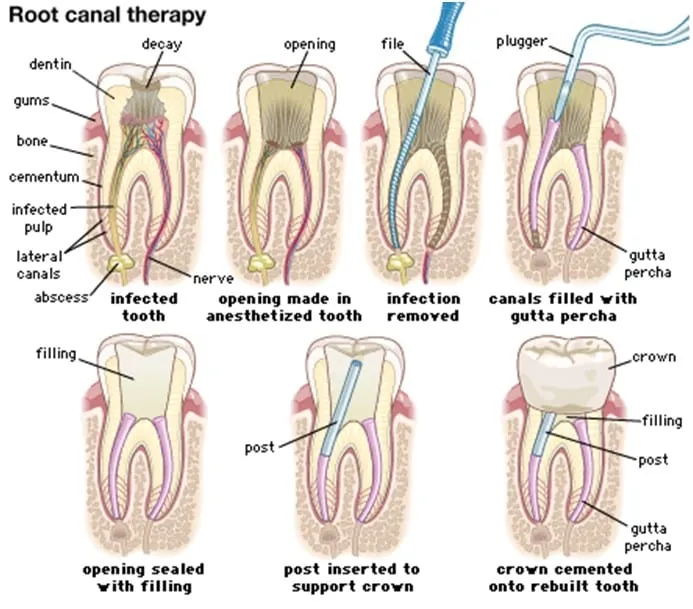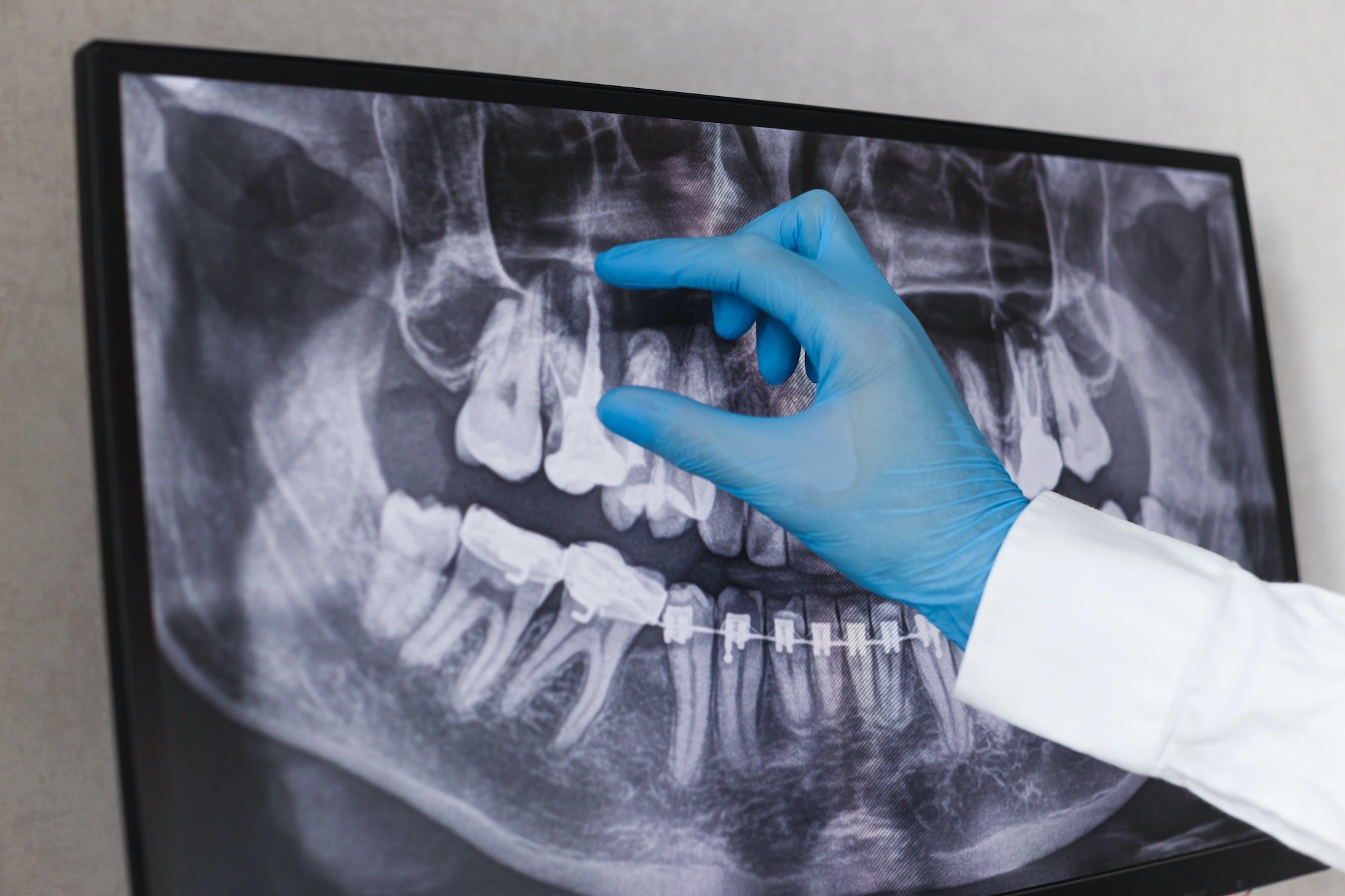If your endodontist has prescribed root canal treatment for a front tooth, you may have concerns about what the procedure entails and how your tooth will be different afterward. This is a valid concern since front teeth have the added responsibility of defining your smile. Although root canal treatment for front teeth is more or less the same as it is for other teeth, there are certain differences and unique characteristics to take into account. By understanding each step of the treatment, you can feel more at ease with your upcoming root canal.
Why a Root Canal is Needed

Obviously, the first thing to understand is why a root canal is necessary in the first place. All teeth have a blood supply, a nerve, and other tissues that are found within hollow chambers inside the tooth (the “canals”). This assembly of blood vessels, nerves, and tissue is known as the dental pulp. In the event of a deep cavity, periodontal disease, or other conditions that introduce bacteria to the interior of a tooth, the pulp itself can become infected. This condition is what is commonly known as an “abscess.” The pulp supplies the bacteria with vital nutrients that allow the infection to thrive. Only by removing the pulp from the tooth can the infection be wiped out permanently. This is precisely what root canal treatment accomplishes.
Should You Have Root Canal Treatment on a Wisdom Tooth?
How Root Canal Treatment for Front Teeth is Performed
Regardless of the tooth in question, all root canals start by having a hole drilled in the tooth so that the interior pulp chamber and canals can be accessed. For back teeth, such as molars and premolars, this hole is made in the top, or biting surface of the tooth. Front teeth, however, do not have a broad biting surface in which to create an access hole. Instead, a hole is drilled through the back side of front teeth until the pulp is reached.
Once the pulp is accessed, it is carefully removed, and the hollow space inside the tooth is disinfected, smoothed, and shaped using specialized instruments. This smoothing and shaping allow for easy filling of the space with gutta-percha, a naturally occurring material that helps prevent future infections and fills the empty space in the tooth. With the canals filled, the hole in the tooth is filled with a material that is usually temporary, kept in place until a time when a crown can be placed on the tooth, which is usually the final step in root canal treatment.
Although the actual procedure is the same, there are some aspects that are different in root canal treatment for front teeth. For instance, crowns are usually indicated as the final restoration for root canal treated teeth, since they provide needed strength and protection that helps the tooth last for years to come. However, in some instances, a crown may not be needed on a front tooth that has been treated with a root canal. Since front teeth do not bear as much chewing and biting forces as back teeth, crowning the tooth is not quite as essential.
There are also aesthetic concerns regarding dental crowns on front teeth. As an example, suppose a root canal was performed on one of the central incisors. If a crown were to be placed on the tooth, it would be difficult to match the shade of the surrounding front teeth perfectly, an important consideration regarding the appearance of the smile going forward. Additionally, even if a perfect shade match is achieved, a dental crown will not fade or change colors as natural teeth do over time. What can result, then, is a crown that is noticeably different in color than the surrounding teeth. It is possible, of course, to attempt to whiten the natural teeth to a point where they match the crown, but this can be somewhat tricky, especially if the natural teeth have restorations themselves, as these will not change color. Generally speaking, however, crowning the tooth is the ideal choice, and with modern dental materials and laboratory technology, it is usually possible to achieve a very lifelike and aesthetic crown.

Root canal treatment for front teeth can still have an impact on tooth aesthetics even if a crown is not placed. Having a root canal on a front tooth can cause the tooth to slightly darken or change color over time. There is a solution for this, however: a procedure called internal bleaching. Internal bleaching is exactly what it sounds like: instead of applying whitening material to the exterior of the tooth, the tooth is whitened from within. Only teeth that have had root canals can be whitened internally since they have an accessible interior space and no nerve to cause pain. Internal bleaching is generally very effective and can keep the tooth looking bright and healthy when a crown is not utilized.
In summary, root canal treatment for front teeth is generally the same as it is for other teeth, although there are some cosmetic decisions to make following treatment. Most importantly, a root canal eradicates infection and allows you to keep your natural tooth for many years.
Symptoms of abscessed teeth include swelling, dull, throbbing pain, and sensitivity to hot and cold. If you are experiencing any of these symptoms, or are having moderate to severe tooth pain, visit your endodontist as soon as possible. The sooner an abscessed tooth can be treated with a root canal, the better its prognosis will be.

Only your dentist or endodontist can diagnose an abscessed tooth. Attempting to manage the pain and “wait it out” in hopes that the toothache will subside can be a dangerous proposition. If the infection spreads to other parts of the mouth, jaw, or neck, that is a true medical emergency that can leave permanent damage. By visiting your endodontist as soon as possible, you can have a simple and stress-free root canal experience.
Why Root Canal Treatment for Broken Teeth Might be Necessary?



